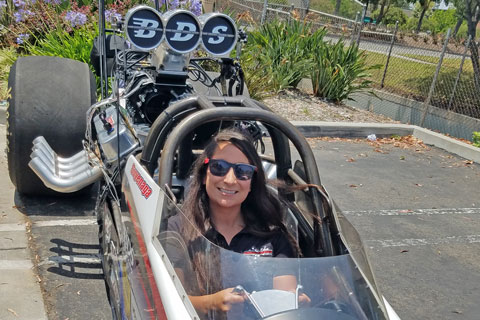PEOPLE
The 2021 SEMA Hall of Fame
Four Inductees Who Forever Changed the Industry
By SEMA News Editors
 Created in 1969, the SEMA Hall of Fame represents the most prestigious honor that the association can bestow on an individual. It is reserved for outstanding achievers whose work has significantly enhanced the stature and growth of the industry and association. For 2021, SEMA inducted Jessi Combs, Rick Love, Bob Moore and Carl Schiefer, all of whom have made lasting impressions on the automotive world.
Created in 1969, the SEMA Hall of Fame represents the most prestigious honor that the association can bestow on an individual. It is reserved for outstanding achievers whose work has significantly enhanced the stature and growth of the industry and association. For 2021, SEMA inducted Jessi Combs, Rick Love, Bob Moore and Carl Schiefer, all of whom have made lasting impressions on the automotive world.
As the host of several television programs, the founder of a variety of businesses, and an accomplished fabricator and race-car driver, Combs built an accomplished automotive-industry career. In 2019, she set a land speed record for women—522.783 mph—on an Oregon dry lake bed, but it was a feat that resulted in an accident that led to her untimely death at age 39.
As president of Vintage Air, Love never wavers from volunteering his time and expertise to the industry. Having served multiple terms as chairman of the SEMA Hot Rod Industry Alliance (HRIA), he has been a tireless ambassador, recruiting and encouraging individuals to deepen their association involvement and to learn, network and grow.
As a SEMA Board member and the co-founder and chairman of the SEMA Business Technology Committee, Moore was instrumental in creating standardized data and standards for the automotive specialty-equipment industry. His efforts ultimately resulted in the first-ever one-stop product information data pool.
As the son of the first SEMA Hall of Fame recipient Paul Schiefer, Carl Schiefer built a legacy of his own by founding one of the first marketing agencies dedicated to automotive brands. His agency, Schiefer Media, became instrumental in bringing motorsports brands to the mainstream public.
The careers and contributions of these inductees exemplify hard work, innovation, professionalism and integrity—the very hallmarks of the SEMA Hall of Fame. Their dedication and relationships within the industry have helped make the specialty-equipment marketplace what it is today. SEMA is honored to count these four individuals among its Hall of Fame recipients.
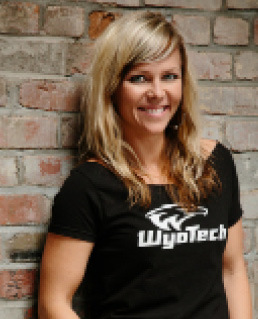
career by graduating at the top of
her class with a degree in custom
automotive fabrication from WyoTech.
Jessi Combs
Fastest Woman on Four Wheels
Her racing suit was covered in Johnson Valley dirt, and her close friend and navigator Theresa Contreras was by her side. It was 2015, and Jessi Combs had shocked the world 12 months prior with a spec-class win at King of the Hammers, leading to an Ultra4 season in which she was crowned national champion. Despite the frustration of needing a new engine to continue, she still made time to talk to SEMA News, offering this advice to aspiring racers: “It’s dedication and passion, and when you have that, nothing can slow you down.”
Combs’ love for all things off-road and racing began in Rapid City, South Dakota, in 1980. Her family introduced her to exploring the great outdoors, creating a passion for both adventure and artistry.
That foundation from her childhood helped guide her career path, beginning with her first stop—a WyoTech classroom in Laramie, Wyoming. Graduating at the top of her class, she crossed the stage with a degree in custom automotive fabrication. During an interview for SEMA’s education department, Combs talked about her lightbulb moment from school.
“I knew that I liked cars. I knew that I liked fixing them. I knew that I liked racing them,” she explained, her eyes lighting up as she continued. “But I thought for sure that I was going to put my creative skills into custom painting. What I didn’t realize is how good of a fabricator I would turn out to be.”
WyoTech was the first to recognize her talent, offering her the chance to build a ’64 Mercury Cyclone alongside fellow classmate Ben Bright. There was just a six-month window to complete the project for a 2004 SEMA Show display. It was a different kind of race, and the podium was actually the convention center in Las Vegas. Her victory proved to be the start of a SEMA Show dynasty.

a ’64 Mercury Cyclone she built with WyoTech classmate Ben
Bright. She returned year after year, making appearances
throughout Show week, like this one for Warn Industries.
Her work on the Mercury also landed her an opportunity to be a guest fabricator on a popular TV show called “Overhaulin’.” Audiences were drawn to her personality, mesmerized by her talent in the garage and behind the wheel, and she added “TV Show Host” to her business card literally overnight.
From 2004–2008, Combs shot more than 90 episodes of “Xtreme 4x4” for Spike TV. She left in 2008 and began making appearances on “Two Guys Garage,” “TruckU” and “Full Throttle TV,” and she went on to be the season seven host of “Mythbusters.” She also found her way into the cockpit of numerous race vehicles and began filling her trophy case accordingly.
In 2013, Combs joined the North American Eagle Supersonic Speed Challenger team as it attempted to break the 512-mph women’s land speed record. With a top speed of 440 mph, she was christened “The Fastest Woman on Four Wheels.” The moniker fueled her need to compete as she returned to that familiar Johnson Valley, where she had been crowned “Queen of the Hammers” in 2014.
Despite the blown engine in 2015, Combs retained her legendary status with another first-place finish in the Every Man’s Challenge Modified Class in the 2016 King of the Hammers just to prove that she was the Queen. In a follow-up interview about her time racing King of the Hammers, Combs was beaming when SEMA News caught up with her.
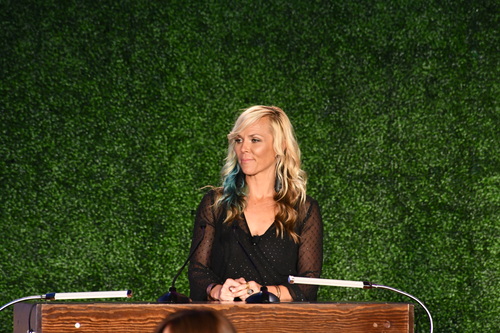
co-host for SEMA’s Installation & Gala as well as the annual SEMA
Industry Awards Banquet.
“There is something inside of me that’s beyond competitive, that loves putting myself to the test endurance-wise and strength-wise, mentally and physically,” she said. “I mean the support system. It’s by far the most important. Not just my sponsors, but when it comes to friends and family, your team is super-duper important.”
On August 27, 2019, Combs achieved her dream of setting a new overall women’s speed record at 522.783 mph, but tragedy struck in a fatal accident during her final run that day.
When talking about Combs’ legacy, friends such as Theresa Contreras remember her support.
“In October one year, she jumped into the paint booth to say ‘hi’ and then popped back out,” Contreras remembered. “She was always a welcome surprise with her beautiful energy, but she could tell I was stressed out. When I walked back to the office later, there was a note sitting on my desk. It read, ‘Theresa, if there is anyone that can handle all this awesomeness it’s you! Love ya tons, Jessi.’”
Contreras teared up.
“That is Jessi,” she said. “Being everyone’s cheerleader! And she still is!”
Jessi’s brother Kelly also saw first hand how she always mentored and encouraged everyone.
“Her talent, work ethic and passion for the automotive industry were magnified by her natural ability to make a lasting impression on anyone she met.” He added, “It is incredibly special that SEMA was at the forefront of it all.”
When asked about the family’s emotions regarding Jessi being inducted into the Hall of Fame, her mother Nina Darrington offered a message of hope.
“The entire family is so very proud for her to receive this honor,” said Darrington. “Through this, her amazing tenacity, energy and passion in the industry will continue to inspire women. She was and forever will be an inspiration.”
The Queen of the Hammers. The Fastest Woman on Four Wheels. And now, SEMA Hall of Fame member. Ladies and gentlemen, the real deal: Jessi Combs.

roadster at Bonneville. He made several licensing runs, reaching
speeds up to 185 mph. “Being able to drive a roadster where Mickey
Thompson, Sir Malcolm Campbell and so many more legends ran on
the salt is still one of the biggest thrills of my life,” Love said.
Rick Love
From Hot Rodder to Industry Ambassador
As president of Vintage Air, Rick Love is passionate about hot rods, restomods and classic cars. He’s been that way since his youth, thanks in large part to his father.
“My dad worked at IBM his entire life, but he was kind of a car guy who did mechanical side work on other people’s cars,” Love explained. “In fact, I still actually have the ’56 Cadillac Sedan Deville he bought in 1958.”
Born May 7, 1961, Love grew up in Binghamton, New York—a small upstate town where nearby dirt tracks were his entertainment and introduction to the world of constant modification and improvement. Naturally, he segued to hot-rodding. As a high-school senior, Love built “a little ’40 Chevrolet that became my daily driver through college.”
After earning a degree in electronics, Love sought warmer climes in San Antonio, Texas, and landed a job with a simulator company that gave him the opportunity to travel the world. Much like his father, Love continued to build cars and did wiring and air-conditioning installations on the side from a home shop. He also freelanced for Rodder’s Digest magazine. His work caught the attention of SEMA Hall of Famer and Vintage Air founder Jack Chisenhall, who invited Love to assist in hot-rodding events and R&D projects.
“Then Jack called me one night out of the blue and said, ‘Why don’t you come meet me for breakfast? I want to talk to you a bit,’” Love recalled. That breakfast turned into lunch, then a dinner topped with a job offer.
“The timing was just really good,” Love said. “We had a young son [Matt] at home, and I was tired of all the traveling. I went to work for Jack full-time in 1998 and have been there ever since.”
Love was named company president in spring 2021, but from the beginning, Chisenhall encouraged him to get involved with SEMA, so he joined what’s now the Hot Rod Industry Alliance (HRIA) and became an energetic volunteer. He served on the HRIA select committee and as the council’s chair. A veteran of several Washington Rallys, he also served on the SEMA Board nominating committee and helped advance numerous HRIA education programs for builders.
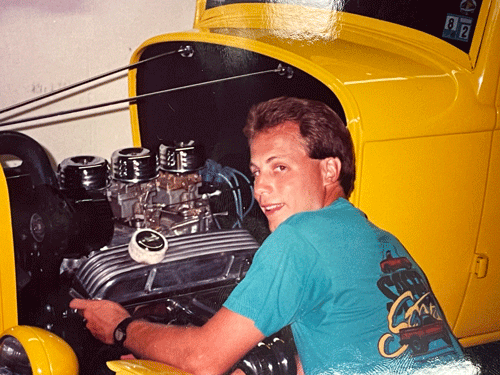
a variety of projects, including this American Graffiti-inspired ’32 Ford
Coupe built as a project car for Rodder’s Digest magazine in 1990. He
remains a staunch supporter of today’s young builders.
“So many of these guys go from a backyard business to renting or owning a larger building, but nobody ever teaches them the business skills they need with that growth,” he observed. “I have also really enjoyed the HRIA feature vehicle program. One of our mandates was to get young upcoming builders and their cars to the SEMA Show and get them some limelight on the bigger stage. A lot of builders benefited from that. It gave them exposure they couldn’t get anywhere else. They would get television interviews, meet potential customers and encounter other industry people to help their career.”
In fact, Love considers the relationships built through SEMA—and especially at the Show—to be among the association’s greatest benefits.
“Where else can you learn what everybody else is doing with new products and trends?” he asked. “Just the people you meet and the information you can gain from people from all over the world is incredible. Some of the best industry connections I’ve made couldn’t have been made anywhere else.”
A tireless industry advocate, Love remains hands-on in the car hobby. Along with his father’s car, his collection includes a ’32 Ford coupe, ’72 Camaro, ’66 El Camino that serves as his runabout, and ’39 Ford Deluxe coupe that he has owned for more than 35 years.
“My wife Linda and I were just dating—gosh, that was 1991 or so,” he said. “We got in that ’39 and went to Florida for an NSRA event. Her family was just aghast that we were going to get in that old car and drive all the way to Florida.”
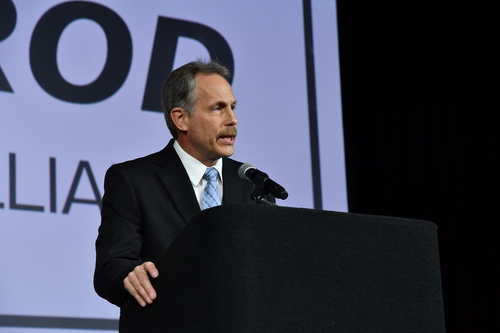
leadership role in numerous SEMA events, including the annual HRIA
receptions at the SEMA Show. “I was very fortunate to follow
[legendary motorsports announcer] Dave McClelland for several years
as the reception’s emcee,” said Love.
Today their son Matt is about the age Love was when he started building hot rods. So will Matt carry on the tradition?
“Interestingly, he likes the old cars, and we got a ’56 Ford Victoria two-door hardtop when he was a junior in high school,” Love said. “It’s a basic restoration that we upgraded a little bit for daily driving. It’s funny, but in many ways he’s representative of our new kind of customer, because he loves that ’56 and drives it everywhere, but he’s not a mechanic. Changing the oil is about all he does, but he loves the car.”
And that leads to what Love views as one of the industry’s big challenges.
“I think we need to do everything we can—as SEMA is—to get as many younger people as we can interested in not only the industry but cars in general. Growing up, cars were your ticket to freedom,” he said, adding that the industry can still offer that thrill to young people, albeit differently.
“I feel so blessed to be involved with this industry,” he concluded. “Jack Chisenhall took a chance on me as a young kid and gave me a rope and room to grow. This industry has given me the best friends of my life, and we’re all so fortunate to be part of this family.”
For his work spreading that family experience to others, Rick Love joins the Hall of Fame.
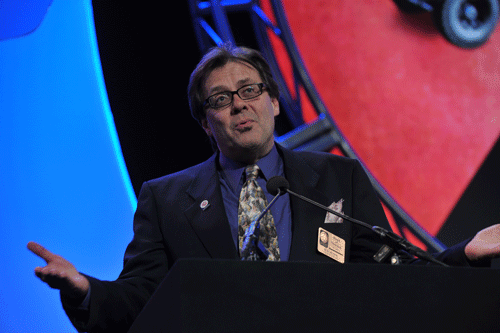
with a focus on leveraging that “crazy little emerging technology
called the internet” to help his clients grow their businesses.
Bob Moore
An Online Marketing and Sales Visionary
When Bob Moore was notified by SEMA President and CEO Chris Kersting of his induction into the SEMA Hall of Fame, his reaction was, in his words, “stunned disbelief.”
“I told Chris, ‘I’m not a builder, and I’m not a racer,’” Moore recalled.
Fair enough, Kersting replied, but what Bob Moore had accomplished was equally noteworthy and deserving of recognition. In Moore’s case, his accomplishments span some four decades in the aftermarket as a marketing visionary and a tech innovator who helped shepherd the industry into the digital age. And yet, a career in the aftermarket was not among his future plans as a young man.
“I like to say that I didn’t pick the aftermarket,” he said. “The aftermarket picked me.”
Moore grew up in the Kansas City area. While attending Kansas State Teachers’ College with a dual major—psychology and anthropology, which “qualified me to be a tedious conversationalist”—he and a roommate started a college radio station, which led him to the worlds of marketing and advertising. Upon graduation, he took a marketing job at a local agency that included a number of automotive aftermarket companies as clients. That eventually led him to his first SEMA Show in 1980.
“SEMA was really cool,” Moore recalled. “Even then it was big, and it was really cool to walk around and see all the cars, the stars and the drivers.”
That led him to focus his sales and marketing expertise more exclusively on the aftermarket in the ensuing years, eventually working with leading companies such as Dana, Western Auto and Federal Mogul. But working with such big clients gradually “drew me away from SEMA, where it all started,” so in 1996 he started his own company, Bob Moore & Partners, where he began to focus his attention on “this crazy little emerging technology called the internet.”
In those early days, he recalls, it wasn’t easy to convince clients to embrace the new technology as a sales and marketing tool for fear of disrupting their existing business models.
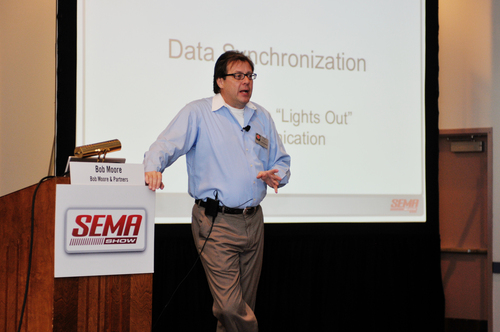
numerous industry seminars and hosted many SEMA educational
events.
“But what I learned early on in helping customers put their products on the internet was the importance of data—and more importantly, getting that data into a shareable state,” he said. “In those days, manufacturers had all that information—images, drawings, installation instructions, specifications—but they didn’t have it readily packaged to be shared, and there wasn’t a mechanism to gather up all the information and distribute it, either to their point-of-sale systems if they were a retail chain or to post on their websites if they were a web seller.”
After working for several years with clients on building and maintaining shareable online databases, a phone call led him directly back to SEMA in 2002.
“Jon Wyly [former SEMA Data Co-op CEO] called me and said that SEMA had been watching my work, was trying to replicate what the aftermarket was doing, and he asked if I’d be willing to help out,” Moore recalled. “I said ‘Sure,’ and that’s when we formed the SEMA Business Technology Committee.”
Out of that initial collaboration came a working study group that, nearly 20 years later, has evolved into the SDC, now known as SEMA Data. In its present form, it serves as an industry-leading shareable database hosting more than 4.6 million parts with 67 million applications.
Looking back on the project, Moore said it’s the career accomplishment he’s proudest of, adding that “it took a lot of vision on the part of a lot of people on the Board and on the [SEMA] staff to convince the naysayers that this was the thing to do.”
But Moore’s experience in digital sales and marketing predates SEMA by many years. In 1983, working with Clevite Engine Bearings, he created Compukit—one of the industry’s first electronic engine-parts catalogs. He also co-founded Free-Cat, a supplier-led electronic parts catalog and data service. During his time working with Dana Corp., he helped create the first vendor-managed inventory system, called the Collaborative Automated Replenishment Program.

SEMA Data, the industry’s largest shareable product management
data source.
Moore’s career accomplishments extend far beyond data management, however. He has taught several University of The Aftermarket courses, most notably on the subject of supply-chain technology, and is a recipient of Northwood University’s prestigious Automotive Management Education Award. His monthly column, “Ahead of The Curve,” was featured in Aftermarket Business Magazine for more than 30 years (he estimates that he’s written some 3,000 pages of copy), and he’s also been a featured speaker at events hosted by the Aftermarket eForum, the Automotive Warehouse Distributors Association, the Automotive Suppliers Association and other industry groups.
As a SEMA volunteer, Moore’s record is extensive, including two terms on the Board of Directors and its executive committee; service as a SEMA Ambassador; six years of lobbying in Washington, D.C., as part of the SEMA legislative team; chairmanship of the SEMA Person of the Year Task Force; and as a speaker at numerous SEMA educational forums. He was awarded the SEMA Chairman’s Service Award in 2010 and is now a Hall of Fame inductee for 2021 for his contributions to the industry.
“I always had an interest in technology, and I always had an interest in marketing and selling,” Moore reflected. “The confluence between these two things is what drove me throughout my career.”
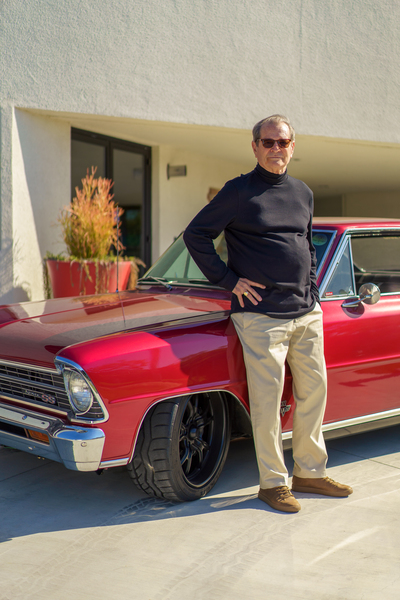
enthusiast media agency with an original focus on
automotive aftermarket and related enthusiast
categories. He initiated advertising for automotive
brands on television—a practice that may seem
standard today, but was unusual at the time and
significantly expanded market reach to a nationwide
audience.
Carl Schiefer
Family Tradition, Groundbreaking Media
Carl Schiefer is known as a pioneer of automotive aftermarket and motorsports marketing. He was the first to bring high-performance products and motorsports personalities to a mainstream audience through cable TV advertising. With spots on then-budding cable channels such as ESPN and TNN, Schiefer helped aftermarket companies capture more market share, gain a massive number of leads, and generate new business overall.
As the son of Paul Schiefer—the first member of the SEMA Hall of Fame and a legend in the development of the earliest flywheels and clutches for all-out high performance—Carl grew up around racing. He spent his early years watching his father race in dry lake meets during the late ’40s. The time he spent at the track inspired him to get behind the wheel and compete.
“My father was very successful at the dry lakes, and I admired that,” Schiefer said. “It made me want to punch the throttle.”
By the time he was 13, Schiefer was helping to promote the Schiefer Manufacturing Company and its high-performance products at local racetracks and businesses. With a love of high performance in his blood, it did not take long before Schiefer’s days at the track watching his father shifted to days at the track racing for Don “Big Daddy” Garlits.
“We’ve always had a great relationship with ‘Big Daddy,’” Schiefer said. “I have been friends with him since I was 13 years old. It was the same time when my father was running the clutch business and I was promoting it.”
During Schiefer’s time chasing checkered flags, he competed against other racing greats such as Tommy Ivo and the Smothers Brothers. He raced Top Gas and Top Fuel dragsters and credits his success to technicians who knew how to push the most power from an engine, pre-race preparation, and a bit of good timing.

Gas and Top Fuel dragsters amongst the greats,
including Don Garlits, Tommy Ivo and the Smothers
Brothers.
“At the track with Big Daddy, for example, he’d have me change tires, check the engine and everything on the car, and then take a pass with it,” Schiefer recalled. “I was fortunate to work with great racers and mechanics—guys who really knew what they were doing. I happened to capture the essence of leaving the starting line first and won some races.”
He continued to race through his late 20s. In his 30s, Schiefer worked as a marketing director for several high-performance parts manufacturers. He had already earned a reputation as a worthy competitor and a trustworthy person, which helped him build strong relationships with racers and forge friendships throughout the motorsports industry, but it did not stop there.
During his short stint running a landscaping business, Schiefer’s reputation and hard work created an unexpected opportunity to shift into sports marketing. He was doing work at Don Sutton’s house, and the Hall of Fame pitcher was impressed with the job that Schiefer had done. He was equally impressed with Schiefer’s work ethic and background in advertising and promotion.
As a sports agent, Schiefer represented athletes such as Eric Dickerson and Wilt Chamberlin in addition to Sutton. He created advertising and marketing campaigns promoting professional athletes to a wide audience.
It was around that time that he was out at a track with his good friend Steve Evans. With a few words, Evans would steer Schiefer in a direction that would permanently change the future of motorsports marketing.
According to Schiefer, Evans said, “We should check the cable TV business. It’s going to be a big thing.”
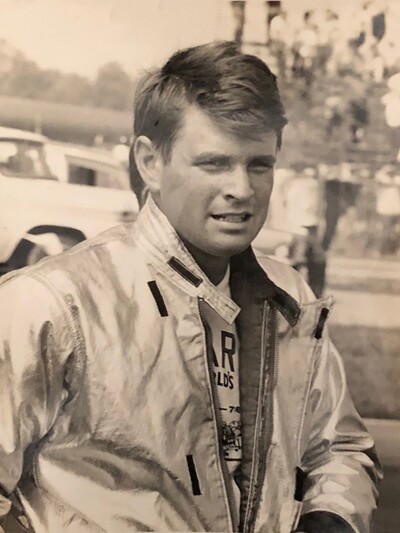
father’s clutch and flywheel shop earned him a
reputation as a worthy competitor and trustworthy
person, helping him to build a strong bond with racers
and forge friendships throughout the motorsports
industry.
Through Schiefer Media, companies that were never before seen on TV, such as MOPAR, Edelbrock and Bilstein, gained brand exposure outside of the ordinary automotive advertising avenues. Schiefer Media soon was working with retailers such as AutoZone and Advance Auto Parts, creating national advertising to drive business to those stores.
“We broke out of the traditional Hot Rod magazine-type of advertising and took them on ESPN, ESPN Sports and TNN, and we helped grow the businesses in a national market,” Schiefer said.
Even with a history of racing, promotion and marketing, combined with his work with SEMA and his extraordinary reputation in the automotive aftermarket, an induction into the SEMA Hall of Fame was something that he did not expect.
“When Chris Kersting called me to tell me I am being inducted, I was shocked.
I really was,” Schiefer said.
Today, Schiefer Media continues to operate as SCS, with Schiefer’s son James as CEO.
James shared his father’s excitement and appreciation of being inducted into the SEMA Hall of Fame, something that’s becoming a trend for the Schiefer family.
“It’s an incredible honor,” James said. “Seeing my dad’s lifelong passion for the automotive industry, his commitment to his friends, to the brands, to SEMA, it was beyond work for him. It was fun. He followed his father’s footsteps; I guess I have big shoes to fill for myself.”
To that, his father replied, “I think you’re filling them nicely.”


